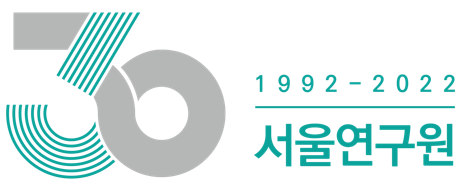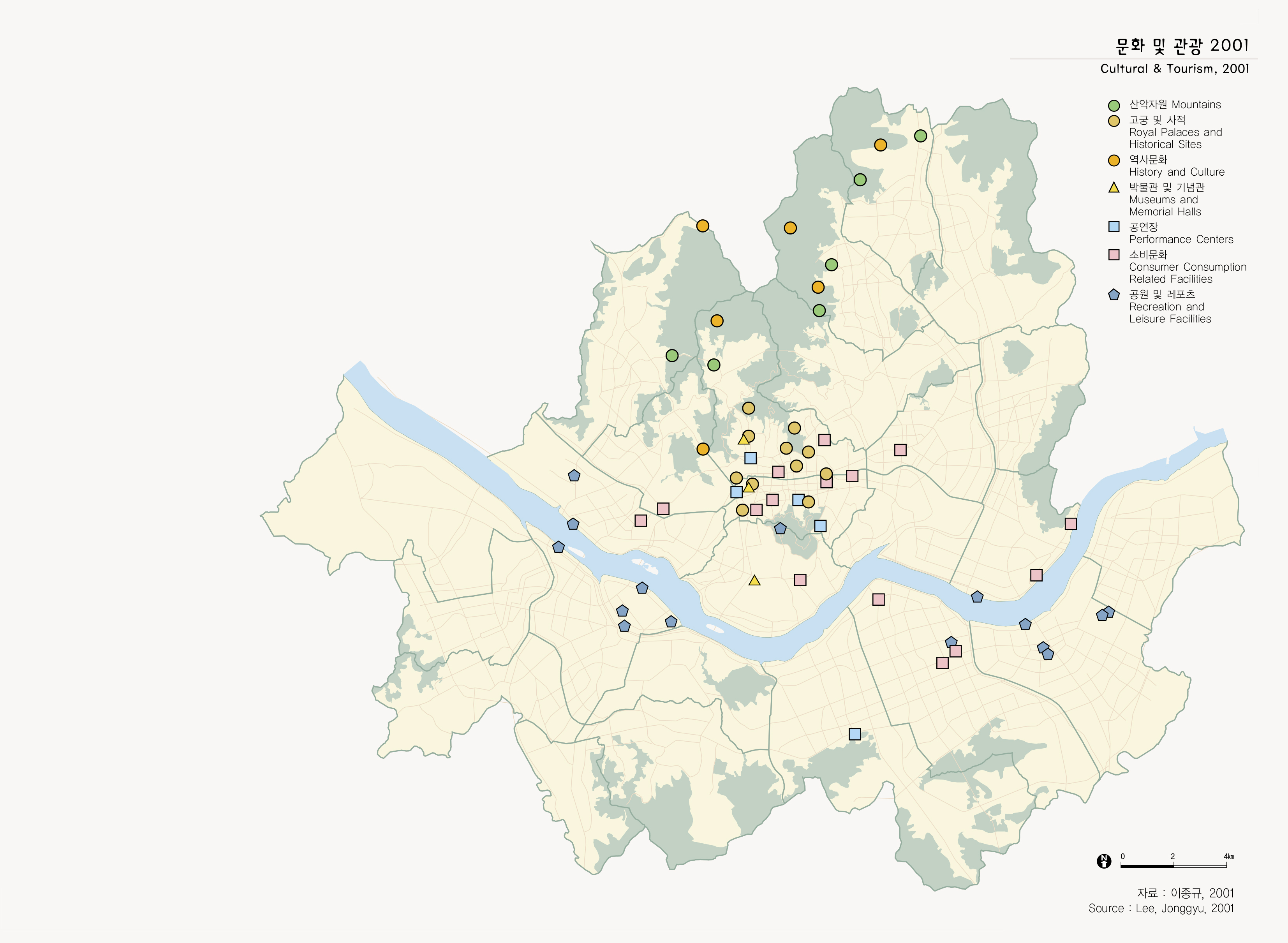-
교육 및 정보화 실태
관광자원
-
관광자원
대내적으로는 국민소득의 향상 및 주 5일제 근무의 도입, 대외적으로는 남북간 교류증진, 신공항 개항, 그리고 2002년 월드컵 개최 등으로 외국인 관광객이 증가할 것으로 예상되어 관광자원에 대한 중요성은 날로 더해가고 있다.
서울의 관광자원은 산악자원, 고궁 및 사적, 역사문화, 박물관 및 기념관, 공연장, 소비문화, 그리고 공원 및 레포츠시설 등으로 구분할 수 있다. 관광자원의 공간적 분포를 보면 강북의 주요 산을 중심으로는 산악자원, 도심에는 역사 및 문화관광자원, 강남에는 소비문화와 관련된 자원이 많다. 이들 자원간의 연계성 확보 및 관광 기반시설의 확충이 필요하다.
Tourism Resources
Income increases, the introduction of the 5-work-day week system, increased exchanges between South Korea and North Korea, the opening of a new international airport, and the 2002 World Cup games, both domestic and foreign tourists are expected to increase, and the importance of tourism resources is growing.
Seoul's tourism resources are mountains, royal palaces, historical sites, history & culture, museums, memorials halls, performing centers, department stores, restaurants, parks, recreation and leisure facilities and others. The spatial distribution of the tourism resources is that the major mountains are in Gangbuk (north of the Han River), historical and cultural tourism resources are mostly in downtown areas, and shopping centers and consumer consumption related facilities are in Gangnam (south of the Han River) areas.
Tourism infrastructure and connecting links between the tourism resources are needed.
출처 : 이종규, 2001


